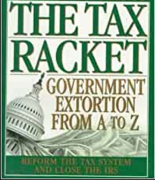CovOps

 Location : Ether-Sphere Location : Ether-Sphere
Job/hobbies : Irrationality Exterminator
Humor : Über Serious
 |  Subject: Potential impact of Bidenazi's thieving estate-tax plan Subject: Potential impact of Bidenazi's thieving estate-tax plan  Wed Oct 20, 2021 1:04 am Wed Oct 20, 2021 1:04 am | |
| “Biden’s liberal plan would force many family farms and ranches to be sold off to pay his higher capital gains taxes.”
— Montana rancher Jake Feddes, in an ad sponsored by anti-tax advocacy group Building America’s Future
This fact check has been updated with a comment from Building America’s Future.
This ad, appearing in Montana, ends with Feddes urging viewers to “tell Senator Jon Tester to oppose Biden’s tax hikes.” The funny thing is that Tester, a Democrat, is already on record opposing President Biden’s tax proposal targeted in the ad — and House Democrats declined to include it in the version of the tax bill crafted by the Ways and Means Committee.
But the ad gives us an opportunity to discuss one of our favorite wonky tax subjects: “stepped-up basis.” Those few words signify tens of billions of dollars for the superwealthy that are currently lost by the Treasury as Congress has, over the years, taken an ax to the estate tax.
The Facts
There was an implicit bargain in the structure of the estate tax created more than 100 years ago. When people with wealth die, there are often unrealized capital gains from stock, bond and real estate investments. But it’s also rather complicated to figure out exactly what those gains might be, especially if accurate records were not kept.
So, to keep things simple, the value of the assets given to heirs was set at the value at the time of death. After a certain threshold was reached — which was usually high enough that only the top 1 or 2 percent of taxpayers was affected — taxes would be levied on the value of the entire estate.
Imagine stocks that were purchased for $250,000 but are worth $1 million when the investor dies. The “stepped-up basis” would be $1 million. If the heirs sold the shares for $1.1 million, they would owe capital-gains tax only on the $100,000 difference, not the $850,000 difference from the original purchase price. (That is known as “carry-over basis” in the tax trade.)
But over the past 20 years, Congress has kept lifting the threshold that would trigger an estate-tax penalty — and has also lowered the tax rate.
When The Fact Checker first wrote about this issue in 2000, the first $675,000 of an estate ($1.35 million for couples) was exempt from tax before a 55 percent tax kicked in. Farms and closely held businesses had a $1.3 million exemption that, with other discounts and extended-payment schedules, grew to about $4 million.
By 2015, the exemption for individuals was $5.43 million (nearly $11 million for couples), and the tax rate was 40 percent on any amount after that. The 2017 tax bill then raised the exemption even higher — to $11.2 million for individuals and $22.4 million for couples — before any tax was levied. Those levels are also indexed for inflation, though they are due to be cut almost in half in 2026 as the 2017 tax cuts phase out.
Increasingly that means fewer people ever pay the estate tax. In 2001, there were 51,736 taxable estate-tax returns that were filed, according to the Internal Revenue Service. By 2019, the number of taxable returns that were filed had fallen to 2,570.
The U.S. Department of Agriculture estimates that in 2020, only 0.16 percent of farm estates had to pay an estate tax. That’s about 50 farms out of 32,174 farm estates. (An additional 150 farms needed to file an estate-tax return but did not have any tax liability.)
Yet even as the estate tax has been eliminated for all but a tiny percentage of Americans, stepped-up basis has remained. As long as it stays in place, an increasing share of unrealized capital gains will never be taxed.
The amount of revenue involved is difficult to estimate, but we have some clues. The Joint Committee on Taxation, in its 2020 report on “tax expenditures,” estimates that the revenue loss of not taxing capital gains at death is $217.8 billion over a five-year period, or almost $44 billion a year. That estimate does not include the behavioral effects of all but eliminating the estate tax while keeping stepped-up basis, but it is a rough approximation before any possible exemption.
The net effect could be even higher because people would be encouraged to never sell an asset during their lifetime so their heirs would essentially receive it tax free.
“The estate tax functions as a toll that must be paid to shield capital gains from income taxation,” noted the Joint Committee on Taxation in a 2012 report. “As this toll falls (i.e., the estate tax rate is reduced and/or the estate tax exemption amount increases), it is relatively more attractive to pay the estate tax to avoid the income tax on capital gains realizations. Similarly, as capital gains taxes rise (fall), paying the estate tax toll becomes more (less) attractive because the step-up in gains at death is more (less) valuable. High estate tax rates make the transmission of wealth to heirs less efficient and so encourage the realization of capital gains.”
As you imagine, there has been pressure from the left to deal with the stepped-up basis windfall for the wealthy.
Biden’s Treasury Department, as part of the president’s effort to raise new revenue to pay for expanded social programs, said it would seek to eliminate stepped-up basis except for a $1 million per-person exclusion ($2.5 million for couples, including real estate exemptions).
In effect, Biden would reinstate the estate tax almost to the level of the mid-2000s. But he would be doing it in a backdoor way. The transfer of appreciated property at death would be taxed as a capital-gains realization, rather than a tax-free transaction. The tax would be 23.8 percent, though millionaires would have to pay ordinary tax rates as high as 43.4 percent.
Biden’s idea is not entirely out of left field. When Donald Trump ran for president in 2016, his campaign proposed to eliminate the estate tax — but also eliminate stepped-up basis. However, his exclusion level per individual would have been $5 million, not $1 million.
Moreover, Biden would keep in place the estate tax for people wealthy enough to exceed the $11.7 million exemption, resulting in a hefty 61 percent tax bill for those estates, as they would lose the stepped-up basis and still be required to pay estate taxes.
Now let’s look at the rancher’s complaint: “Biden’s liberal plan would force many family farms and ranches to be sold off to pay his higher capital gains taxes.”
The Treasury document outlining Biden’s plan said that “certain family-owned and operated businesses” could defer the tax as long as the business stayed in family hands. “If a farmer is passing along the farm to his or her children so that they can keep the farm going, no tax is due until they decide to stop farming or sell the farm,” wrote Agriculture Secretary Tom Vilsack in a Wall Street Journal opinion article. “That is true for all other family businesses too.” The Biden plan would also allow for a 15-year fixed-rate repayment plan.
But some farm experts are skeptical. “This ‘deemed’ debt to the IRS will create a lien on the farm and ranch that will create issues with obtaining needed financing to keep the farm and ranch in operation,” wrote Paul Neiffer, a certified public accountant, in the Farm Journal’s AgWeb. “This so-called protection may simply accelerate the liquidation of the family farm or ranch.”
In the many years we’ve been writing about the estate tax, we never could find a farm that was sold off completely to pay the estate tax. But we did interview farmers in 2015 who said parts of farms needed to be sold to pay estate taxes triggered by the death of a grandparent or parent.
While Biden would allow for a $2.5 million exemption from capital-gains realization, land prices have soared in the past 20 years, and farmers often speak of being “land rich and cash poor.” Biden’s exemption would only be about one-tenth of the level of the current estate-tax exemption, so more farms probably would face a potential tax liability.
USDA’s Economic Research Service, in a September analysis, estimated that of 32,174 family farm estates in 2021, 1.1 percent would owe capital gains taxes at death, 18.2 percent would not owe capital gains taxes at death but could have deferred tax liability if the farm assets do not remain family-owned and operated, and 80.7 percent would have no change to their capital-gains tax liability. Nevertheless, 64 percent of midsize farm estates (gross cash farm income of $350,000 to $1 million) would have a deferred tax liability — and percentages are even higher for larger farm estates.
In any case, Biden’s proposal was not included in the House Ways and Means bill. (Feddes did not respond to our requests for an interview, but he told FactCheck.org that the ad was filmed before the panel completed work.) And Tester, the target of the ad, is already on record opposing the estate-tax provision.
“Senator Tester was a leading voice raising concerns with the stepped-up basis proposal pushed over the summer,” said spokesman Roy Lowenstein. “That proposal would have a negative impact on Montana’s family farms, ranches, and small businesses, and he is going to keep fighting to defend those folks from shortsighted policies that put their continued operation in jeopardy.”
Lowenstein did not respond to a request to explain why Tester believes that the proposal would be bad for farmers.
Katie Miller, a spokesperson for the advocacy group that produced the ad, pointed to an analysis by a Senate Republican economist that 65 percent of the value of agriculture production would have a new tax liability if stepped-up basis were eliminated. She also noted that, notwithstanding press statements from the White House and Vilsack, the Treasury statement “does not specify that deferral protections will apply to farmers, leaving family farms like those featured in the ad completely uncertain.”
The Pinocchio Test
You can see the policy dilemma. Tens of billions of dollars in unrealized capital gains every year are being passed to heirs — something that was not contemplated when the current version of the estate tax was enacted in 1916. Yet eliminating stepped-up basis may make estate-tax planning even more complex.
The ad claims that Biden’s tax proposal “would force many family farms and ranches to be sold off to pay his higher capital gains taxes.” That seems exaggerated. Very few farms face estate-tax liability — and relatively few did in the past.
Moreover, Biden’s plan would allow heirs to defer estate taxes until a farm or small business is no longer in family hands. Still, the full implications of Biden’s tax plan on farms and small businesses are unclear, especially if it means a pending estate tax bill would be owed for an indefinite period.
The ad earns Two Pinocchios.

.https://www.washingtonpost.com/politics/2021/10/19/ad-exaggerates-potential-impact-biden-estate-tax-plan/
  
_________________
Anarcho-Capitalist, AnCaps Forum, Ancapolis, OZschwitz Contraband
“The state calls its own violence law, but that of the individual, crime.”-- Max Stirner
"Remember: Evil exists because good men don't kill the government officials committing it." -- Kurt Hofmann |
|

